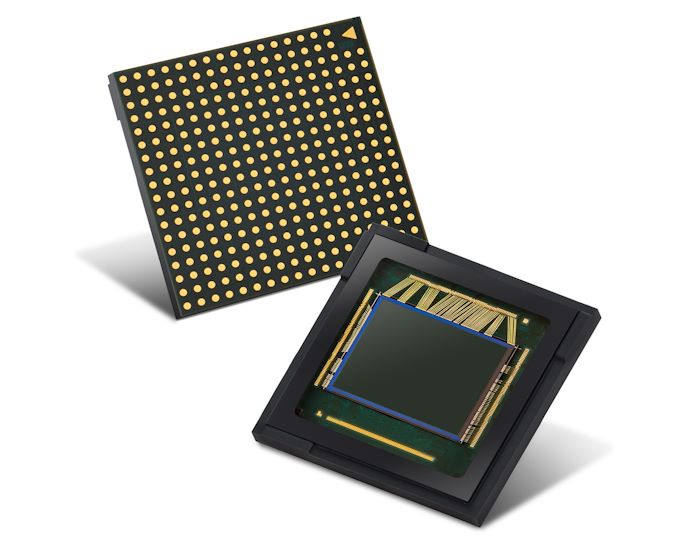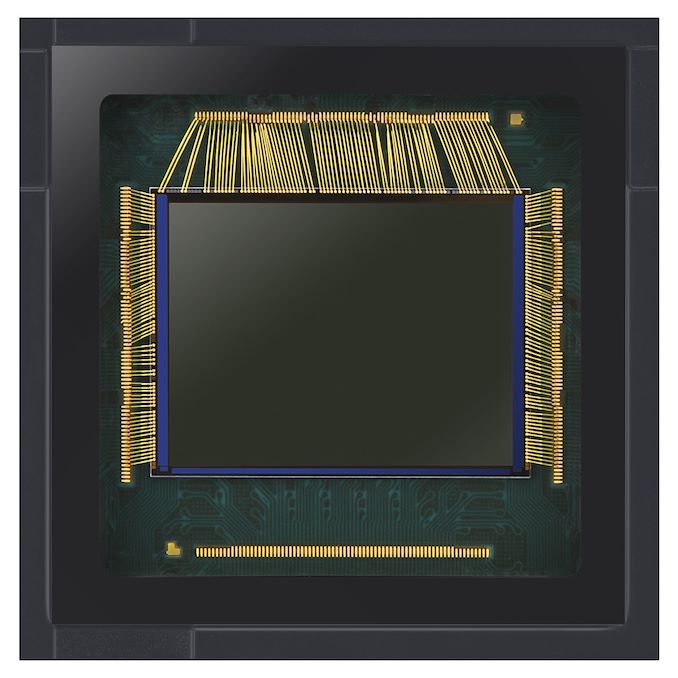Samsung Announces New 50MP Dual-Pixel and Quad-Bayer ISOCELL Sensor
by Andrei Frumusanu on May 19, 2020 6:30 AM EST- Posted in
- Mobile
- Smartphones
- Sensor
- Samsung LSI
- Camera Sensors
- Samsung GN1

Samsung today has announced a brand-new flagship sensor in the form of the ISOCELL GN1. The new sensor is seemingly a follow-up to the 108MP ISOCELL HMX and HM1 sensors that we’ve seen employed by Xiaomi devices and the Galaxy S20 Ultra.
The big changes in the new GN1 is that it uses are different optical formula to the existing larger megapixel sensors. It’s only a bit less than half the resolution at a maximum of 50 megapixels, however the per-pixel pitch grows from 0.8µm to 1.2µm.
It seems that Samsung’s main rationale to grow to a larger pixel pitch wasn’t just the per-pixel increased light gathering ability, but rather the enablement to re-introduce full sensor dual-pixel phase-detection. The existing 108MP sensors that have been out in the market have been using 2x1 distributed on-chip lens phase detection autofocus pixels on the sensor, with the autofocus performance not been nearly as performant and a dual-pixel PD solution. In theory, the GN1 using dual-pixel PD pixels means that it uses pairs of 0.6µm x 1.2µm photo sites.
The GN1 is also the first sensor to pair the dual-pixel technology with a quad-bayer colour filter array, which Samsung calls Tetracell. In effect, the 50MP sensor will natively bin 2x2 pixels to produce a 12.5MP image with effective pixel pitches of 2.4µm. Interestingly, Samsung also talks about providing software algorithms to be able to produce 100MP images by using information from each individual photodiode – which all sounds like pixel-shift super resolution techniques.
The size of the sensor remains at a large 1/1.33” – in essence it’s most comparable to Huawei’s current 50MP sensor that is found in the P40 series phones – with the addition of Dual Pixel PD.
The sensor still supports 8K30 video recording, but we hope it’s able to achieve this with a smaller image crop compared to the current HM1 implementation in the S20 Ultra.
These new generation sensors are extremely challenging for vendors to properly use – besides the increased computational workload to actually use the full resolutions (the reduction from 108MP to 50MP will help there), there’s also the challenge of providing adequate optics that can take advantage of the resolution. It seems the GN1 here is a bit more reasonable in its demands, other than its sheer large size.
Related Reading:
Source: Samsung Newsroom











68 Comments
View All Comments
s.yu - Monday, May 25, 2020 - link
Your theoretical difference is irrelevant. Samsung smartphones' (lack of) detail in their output is a product of their firmware and whatever processing it forces upon the user.64MP quad bayer outputting 64MP retains more detail than outputting 12MP, that goes without say, but first of all it's not worth outputting 64MP(like I said, it's sharp at 16MP, how about releasing a tweaked camera app that defaults to 16MP output directly resized from the 64MP pipeline?); furthermore, the 64MP viewed at 50% is sharper at a glance than 12MP viewed at 100%, which strongly suggests there's intentional tampering with the 12MP pipeline that crushed details where they were otherwise recorded by the sensor; thirdly, this doesn't exclude a 12MP sensor of the same size and process outputting 12MP outperforming this 64MP with the current 12MP pipeline, I'm only stressing this because Gcam works most reliably with the tried and true 12MP readout, and I've heard very little about how reliable it is with high resoluion quad bayer 48MP and up.
s.yu - Monday, May 25, 2020 - link
Actually that sample does make the 12MP mode look a bit worse than it is, if you look in the shadows then you'd realize that either the 12MP mode has a stronger HDR applied or the 64MP mode is simply without HDR. Samsung's ZSL form of HDR seems to go way back but never properly improved over the years, that's why the merge always results in subpar texture and detail retention. If the scene had a stronger contrast, you'd more easily perceive that 12MP mode pushes more shadows, which apparently is what Samsung decides most people would like. Personally, I'd definitely prefer a 16MP supersampled from 64MP as the default, instead of this low quality HDR 12MP, which looks something like JPG quality 3-4 in Adobespeak.Psyside - Tuesday, May 26, 2020 - link
Again, you are using outdated SAMPLES. New updates improved the HDR on 64MP alot, and now if you cant tell the difference or you think is not worth it, you should quite following photography, and focus on things you understand.s.yu - Tuesday, May 26, 2020 - link
If you discredit the samples, then there's nothing to discuss. Go whine at a site with "updated" samples.Psyside - Wednesday, May 27, 2020 - link
Ok, send me your email to show you "how bad" are the 64MP.BedfordTim - Tuesday, May 19, 2020 - link
The camera bumps have got larger, and effectively they are now using the full depth of the case. Folding phones trade area for thickness and could potentially go up to about 20MP. Extending lenses like those in compact cameras also offer potential to go bigger.Sony and Kodak used to do wi-fi linked cameras with full size sensors and optics, which are the best option to go any further.
brucethemoose - Tuesday, May 19, 2020 - link
Oh man, telescopic lenses in a smartphone... back to the future, and a glorious future at that.s.yu - Thursday, May 21, 2020 - link
As long as there's a thick portion of the folding phone(like the chin of that Moto), it would make plenty of sense to use an internal zoom lens with a 1" sensor. It doesn't have to extend.jamDphax - Tuesday, May 19, 2020 - link
These new crops of 1/1.5~1/1.33 inch sensors are WAY bigger than the 12mp 1/2.55" sensors of last gen. Which by themselves are not too bad, and the comparable size as the 20mp point and shot, i.e. Canon PowerShot. And surface area goes up by the products of scaling factors of the sides.So this 1/1.33" 50mp sensor is 3.7x the size of the 1/2.55" 12mp sensor of the Pixel 4, with 4.2x the pixels, not a ridiculous scaling. The quad patterning of the bayer filter reduces color information to a quarter, but luminance wise, it should capture nearly 4x the light/details of the Pixel 4 sensor.
Personally, I am excited to see sensors > 1/2" use in phones. The bulk and complexity of camera bulges can be manage by taking out the ridiculous telephoto/marco/lidar sensors, which are often 1/3" or even smaller that's coupled with optics that are 1~3 stops slower, capturing only a few percent of the luminance of the main camera.
BedfordTim - Wednesday, May 20, 2020 - link
Think of it as a 12MP sensor with sub pixels. The lens limits you to 12MP anyway. The 50MP bit is just marketing.